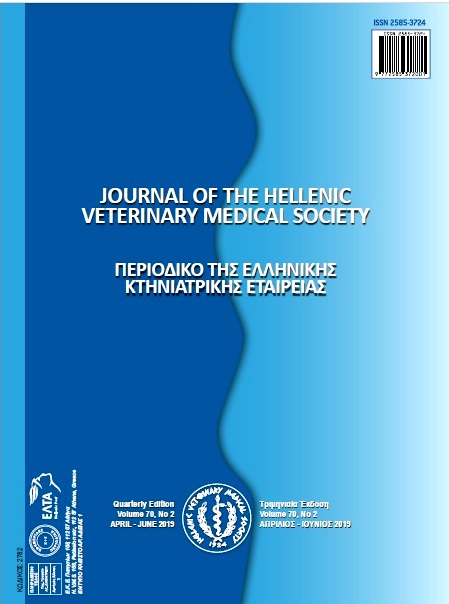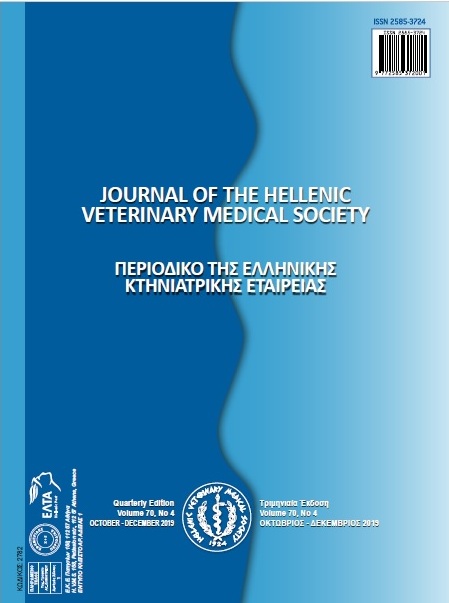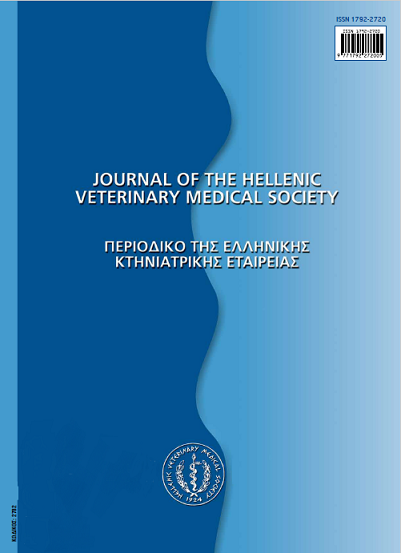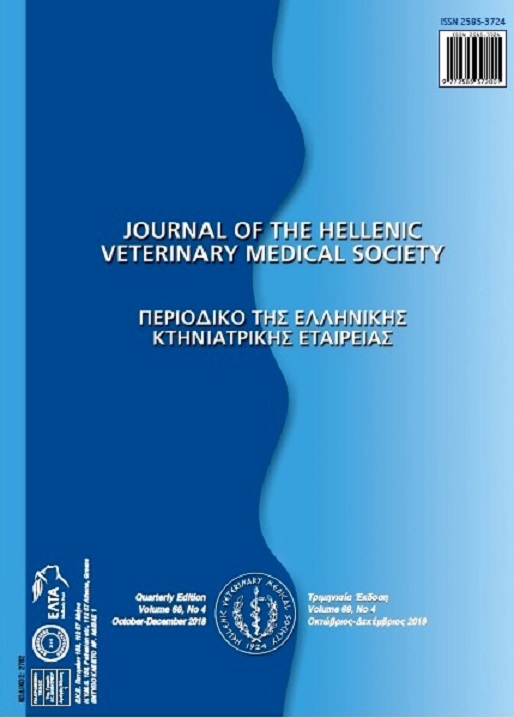Is rumenocentesis a safe technique to collect rumen fluid in dairy cows?
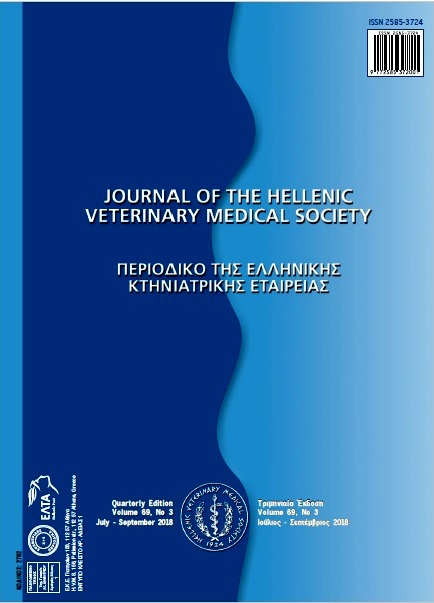
Abstract
Subacute ruminal acidosis is a major issue in dairy cattle and a definite diagnosis is only established by measuring the rumen fluid pH, most credibly collected by rumenocentesis. However, due to its invasive nature, there is still some debate whether it is a safe method or poses risks for cows’ health and welfare. The aim of the study was to retrospectively evaluate the safety of rumenocentesis as a technique to obtain rumen fluid in dairy cows. Results were derived from 2 studies. In study 1, rumenocentesis was performed in 153 Holstein cows from 12 herds, once, between 10 and 90 days in milk (DIM). In study 2, 83 Holstein cows from a dairy farm were repeatedly subjected to rumenocentesisat 30, 90 and 150 DIM. From the 83 cows that were initially enrolled, 8 were culled before the end of the study for reasons irrelative to rumenocentesis; therefore, 236 rumenocenteses were actually performed in study 2 (3 times in 75 cows, twice in 3 cows and once in 5 cows). All cows were monitored for 10 days after rumenocentesis for presence of complications. In addition, daily milk yield was automatically recorded for each cow in study 2 to detect any possiblepost-rumenocentesis short-term reduction of milk yield. Minor only complications were recorded in 7 cases: in 4/153 (2.61%) and 3/236 (1.27%) rumenocenteses in studies 1 and 2, respectively. Small diameter abscesses in 6 cows (3 in study 1 and 3 in study 2) and a larger one in 1 cow in study 1 were observed. The 3 small abscesses in study 2 were all recorded after the 1st rumenocentesis, at DIM 30. All 7 cases were resolved spontaneously within two weeks. Moreover, short-term daily milk yield of study 2 cows was not affected by rumenocentesis. The conclusion is that rumenocentesis is a safe technique to collect small volume of rumen fluid for SARA diagnosis, which does not compromise cows’ health and welfare when appropriately performed.
Article Details
- How to Cite
-
PANOUSIS, N., KITKAS, G., & VALERGAKIS, G. E. (2018). Is rumenocentesis a safe technique to collect rumen fluid in dairy cows?. Journal of the Hellenic Veterinary Medical Society, 69(3), 1135–1140. https://doi.org/10.12681/jhvms.18886
- Issue
- Vol. 69 No. 3 (2018)
- Section
- Research Articles

This work is licensed under a Creative Commons Attribution-NonCommercial 4.0 International License.
Authors who publish with this journal agree to the following terms:
· Authors retain copyright and grant the journal right of first publication with the work simultaneously licensed under a Creative Commons Attribution Non-Commercial License that allows others to share the work with an acknowledgement of the work's authorship and initial publication in this journal.
· Authors are able to enter into separate, additional contractual arrangements for the non-exclusive distribution of the journal's published version of the work (e.g. post it to an institutional repository or publish it in a book), with an acknowledgement of its initial publication in this journal.
· Authors are permitted and encouraged to post their work online (preferably in institutional repositories or on their website) prior to and during the submission process, as it can lead to productive exchanges, as well as earlier and greater citation of published work.



